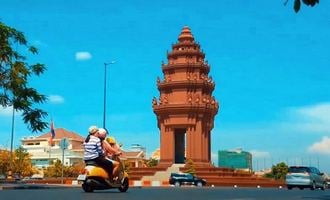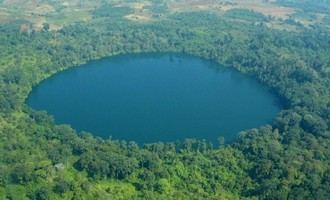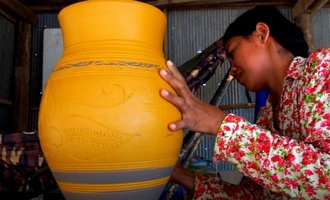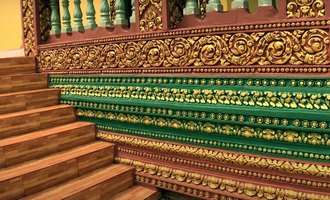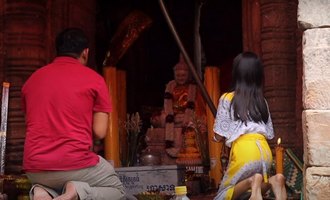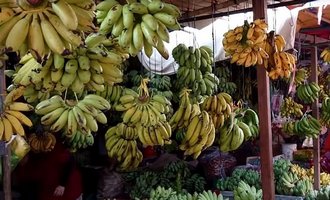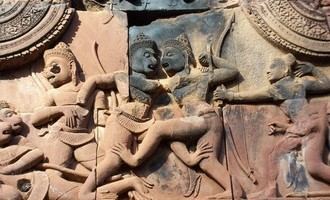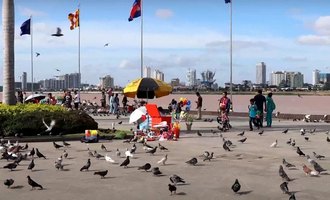Cambodia, the country famous with the Temples of Angkor lies on the south-west edge of Indochina peninsula and is being the hot destination for tourist in Asia. Much more to offer than just Angkor heritage, Cambodia inspires tourists with its beautiful natural setting of golden pristine beaches, peaceful rural scenery and beautiful old colonial cities like Phnom Penh, Battambang, Kampot…
Phnom Penh, the capital city of Cambodia attracts tourists with its undeniable charms of both historical legacy and busy style of modern life. Must see place include The Royal palace, Silver pagoda, Independence monument, National museum, Choeung EK memorial etc...
Siem Reap/Temple of Angkor is the gateway to the millennium-old temple ruins of the Khmer Empire.
On the Mekong river, one take the exhilarating boat trip to Siem Reap, the home province of Angkor Wat, passing on the way floating villages and marvelous scenery is unbeatable experience.
The beach resort of Sihanoukville is one of nature’s paradises. Don’t forget to try succulent seafood available here…
Having left its troubled past largely behind, Cambodia with its inherited wealth and fascinating landscape has enormous potential for tourism and is the call for those wishing to cope with a real life experience.
History
Archaeological evidence indicates that the Mekong delta and its immediate environs have been inhabited since at least 4000 BCE. Whilst the exact origins of the ethnic Khmers is still a subject for debate, they are believed to have migrated to the area along with their Mon cousins from either south west China or north east India in around 2000 BCE. Certainly their presence in what is now Indochina substantially predates the arrival of the ancestors of today's Thai, Lao and Viet peoples.
Read more...
Geography & climate
Cambodia covers an area of 181,040 square kilometers in the southwestern part of the Indochina peninsula. Roughly square in shape, the country is bounded on the north by Thailand and by Laos, on the east and southeast by Vietnam, and on the west by the Gulf of Thailand and by Thailand. Much of the country's area consists of rolling plains. Dominant features are the large, almost centrally located, Tonle Sap (Great Lake) and the Mekong River, which traverses the country from north to south and is the 12th longest river in the world.
The largest part of the country, about 75 percent, consists of the Tonle Sap Basin and the Mekong Lowlands. To the southeast of this great basin is the Mekong Delta, which extends through Vietnam to the South China Sea. The basin and delta regions are rimmed with mountain ranges to the southwest by the Cardamom Mountains and the Elephant Range and to the north by the Dangrek Mountains. Higher land to the northeast and to the east merges into the Central Highlands of southern Vietnam.
Read more...
People
According to the General Population Census of 2011 the total population of Cambodia is estimate 14,805,358, with an annual growth rate of some 2.8 per cent. An estimated 2 million people reside in the capital, Phnom Penh. Other major centres of population include Sihanoukville, Siem Reap, Battambang, Takeo, Kompong Cham and Kompong Thom. Ethnic Khmers make up some 96 per cent of Cambodia's total population.
Read more...
Language
Khmer or Cambodian is the language of the Khmer people and the official language of Cambodia. It is the second most widely spoken Austroasiatic language (after Vietnamese), with speakers in the tens of millions. Khmer has been considerably influenced by Sanskrit and Pali, especially in the royal and religious registers, through the vehicles of Hinduism and Buddhism. It is also the earliest recorded and earliest written language of the Mon–Khmer family, predating Mon and by a significant margin Vietnamese. The Khmer language has influenced, and also been influenced by, Thai, Lao, Vietnamese and Cham, all of which, due to geographical proximity and long-term cultural contact, form a sprachbund in peninsular Southeast Asia.
Read more...
Religion & belief
Approximately 90 per cent of the Cambodian population follows Therevada or Hinayana Buddhism, though this is strongly overlaid with ancestor-worship and animist practices. Over the centuries Buddhist temples (wats) developed an important role in the preservation of culture and the provision of education, especially in rural areas.
Read more...
Cuisine
Khmer cuisine is another name for the foods and cuisine widely consumed in Cambodia. The food of Cambodia includes tropical fruits, rice, noodles, drinks, dessert and various soups. The staple food for Cambodians is rice. Almost every meal includes a bowl of rice, although noodles are also popular. A wide range of curries, soups and stir fries are served with rice. Many rice varieties are available in Cambodia, including aromatic rice and glutinous or sticky rice.
Read more...
Art and literature
Throughout Cambodia’s history, religious principles guided and inspired its arts. A unique Khmer style emerged from the combination of indigenous animistic beliefs and the originally Indian religions of Hinduism and Buddhism. These two religions, along with the Sanskrit language and other elements of Indian civilization, arrived in mainland Southeast Asia during the first few centuries AD
Read more...
Festival & holidays
Khmers’ love of family social events, with music and an abundance of food, is best seen at the numerous festivals which are now once again being held throughout the country.
Read more...


